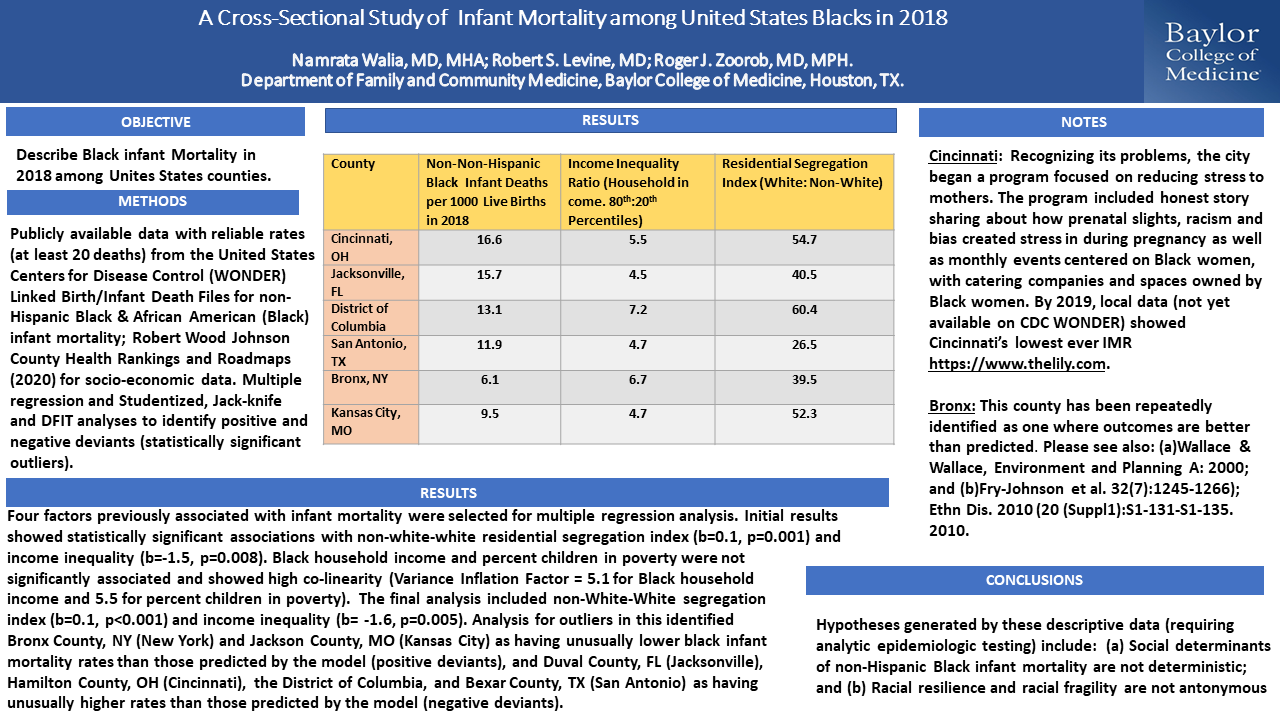PCR001: A Cross Sectional Survey of Infant mortality among the Black population in the United States
Namrata Walia, MD, MHA; Robert Levine; Roger Zoorob, MD, MPH
Abstract
Methods: Data on Non-Hispanic Black (Black) infant death rates was extracted using publicly available Birth/Infant death files data from the United States Centers for Disease Control Wide-ranging ONline Data for Epidemiologic Research (WONDER). Socio-economic data were obtained from the Robert Wood Johnson County Health Rankings and Roadmaps (2020). Multiple regression and Studentized, Jack-knife and DFIT analyses was conducted for analyzing outliers.
Results: Forty-one counties were identified. Statistically significant correlations with non-Hispanic Black infant mortality were found for non-White-White segregation index (r=0.33, 0=0.03), percent Black children in poverty (r=0.43, p=0.005), overcrowding (r=-0.59, p<0.001) Black household income (r=-0.40, p = 0.009), and percent severe housing cost burden (r=0.41, p=0.007). Correlations were not statistically significant for Black-White segregation index, income inequality, violent crime rate, median household income and high school graduation rate. Due to high collinearity, the final multiple regression analysis included only the non-White-White segregation index and percent severe housing cost burden, both of which were significantly associated with Black infant mortality (p<0.001). Analysis for outliers identified Bronx County, NY (New York City) and Jackson County, MO (Kansas City) as having unusually lower black infant mortality rates than that predicted by the regression model (positive deviants), while Duval County, FL (Jacksonville) and Hamilton County, OH (Cincinnati) had unusually high rates (negative deviants).
Conclusions: Analytic epidemiologic research designed a priori to do so is required to test hypotheses generated by these descriptive data. Two such hypotheses are that social determinants of non-Hispanic Black infant mortality are not deterministic and that racial resilience and racial fragility are not antonymous. Research pertaining to positive and negative deviant communities could provide important insights into community resilience as well as information about the roots of adverse mortality among non-Hispanic Black Infants.

Jack Westfall
jwestfall@aafp.org 11/19/2021Terrific poster and presentation. thanks